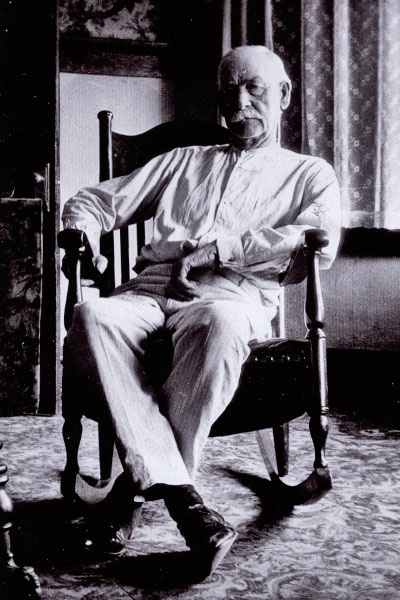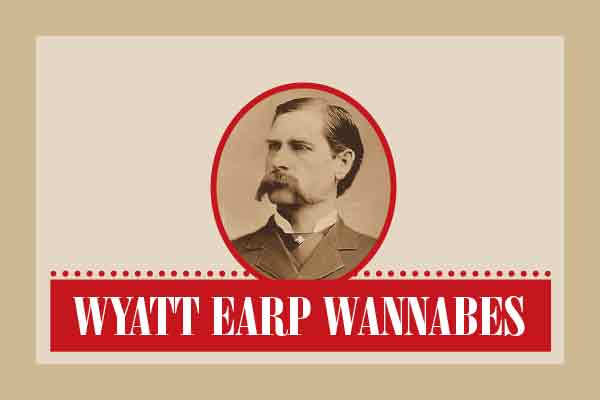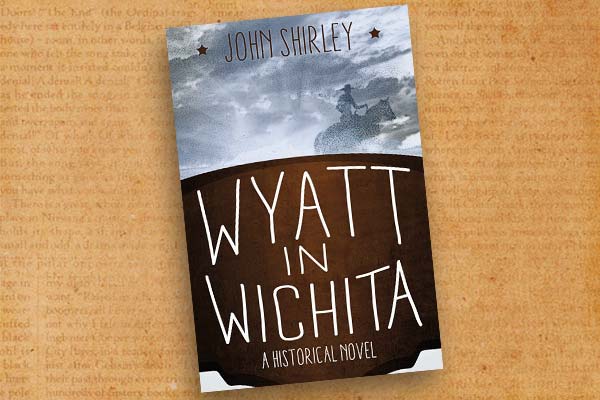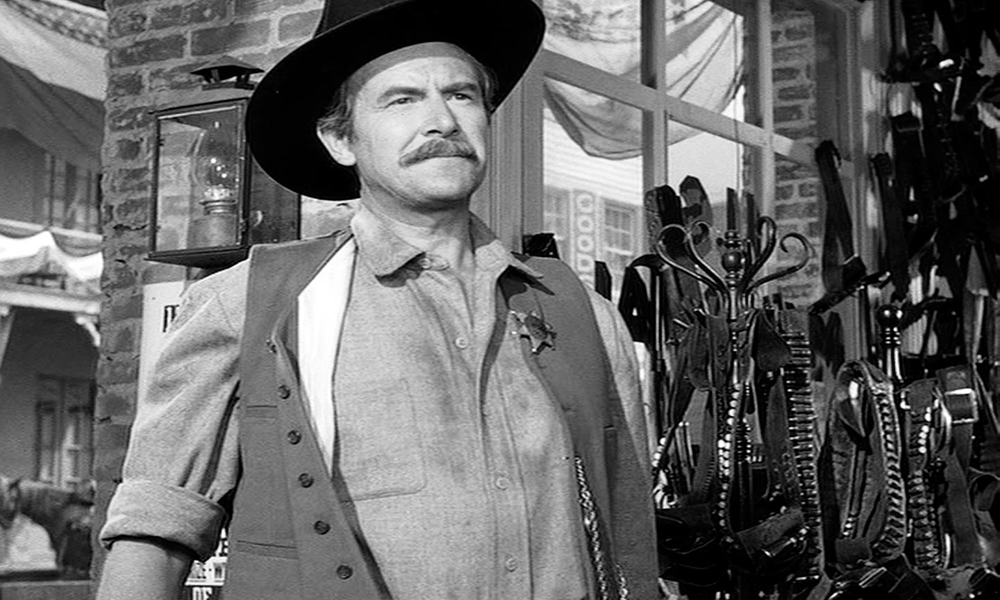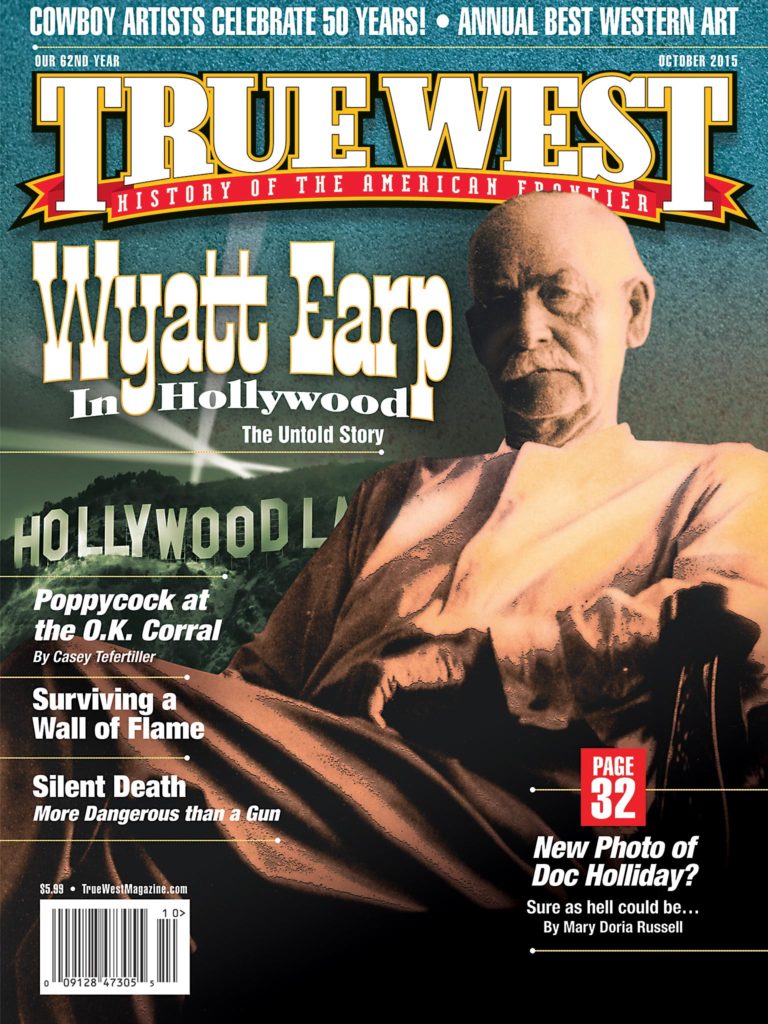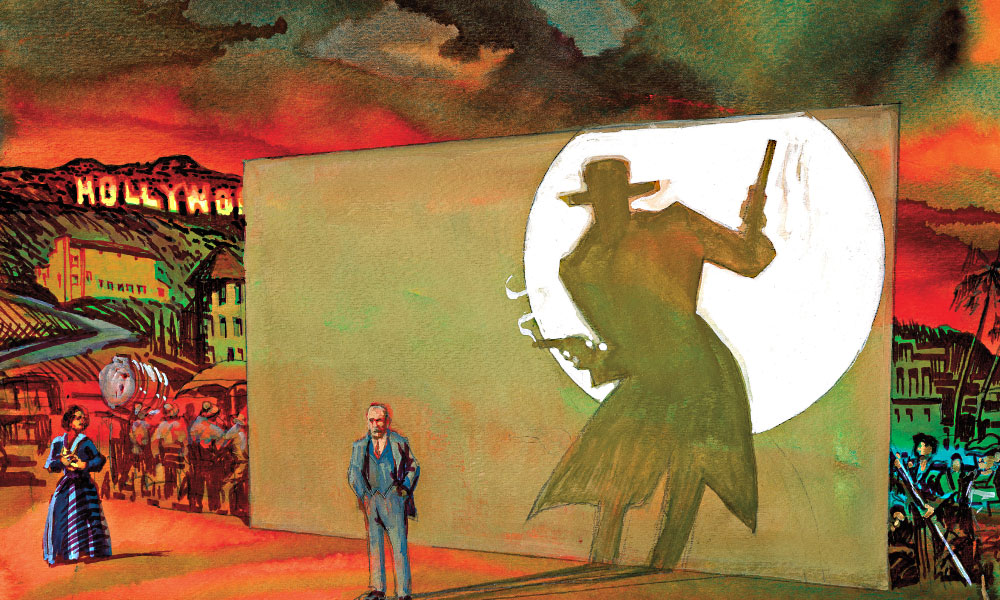
– All illustrations by Bob Boze Bell –
In a letter, written in December 1928, the 80-year-old frontiersman Wyatt Earp opined that perhaps “my health will be back to normal when this story business is all done with.”
He was wrong twice.
Less than a month later, Wyatt was dead, and his legend was on the cusp of exploding. Some outlaws were about to become very rich from his story, but Wyatt never made a dime on any of it. This is the story of how that happened.
The Last Outlaw Town
Four outlaws* got off the train. In the distance, a windmill squeaked ominously. They appeared to be ready for a showdown, but High Noon was decades away. The four outlaws were running from the old ways…and Thomas Edison. Especially Edison.
Starting in 1908, Edison led a gang known as the “Trust.” He and his waspy, East Coast cronies controlled the fledgling movie business by owning all the important patents on projectors and film stock. You couldn’t show a film in the United States without paying them fees.
Plus, Edison and his gang hated films from France, the birthplace of cinema. They didn’t want France’s “star system” to invade our shores, so they banned anything they didn’t like or that they didn’t think America should see. That turned out to be quite a bit.
The outlaws who got off the train in Hollywood liked the sleepy California town because if hired thugs from the Trust showed up, the gang could load their sets and equipment on trucks and head for Mexico. In no time, the town was filled with riffraff and ruffians, con men and criminals.
Wyatt Earp fit right in.
*The four outlaws were Adolph Zukor, Carl Laemmle (who faced 289 indictments from Thomas Edison’s film company), Jack Warner and Wilhelm Fuchs alias William Fox. Zukor helped start Paramount Pictures, Fox founded Fox Film (later 20th Century-Fox), Warner and his brothers birthed Warner Bros. and Laemmle helped create Universal Pictures.
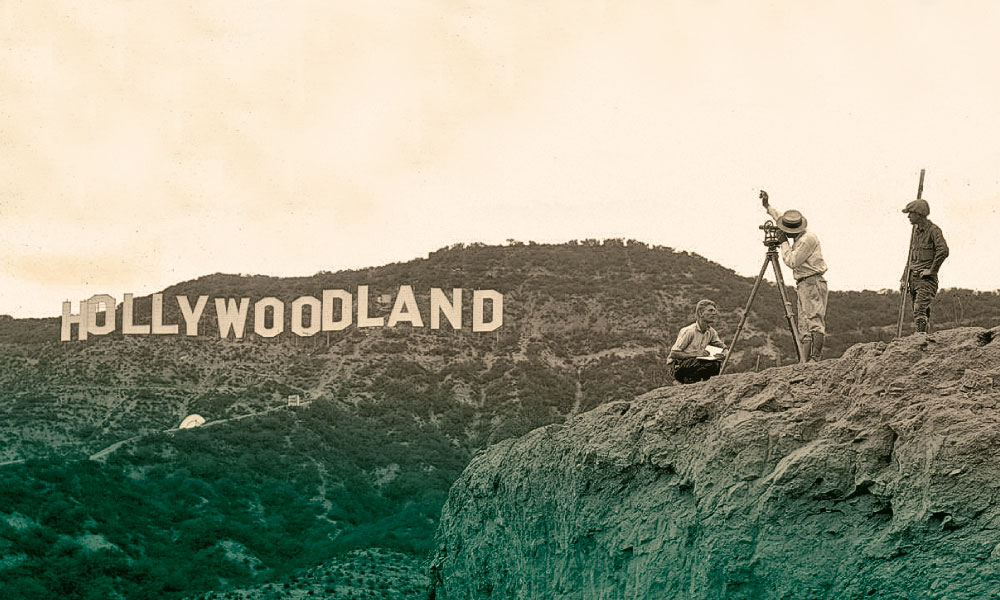
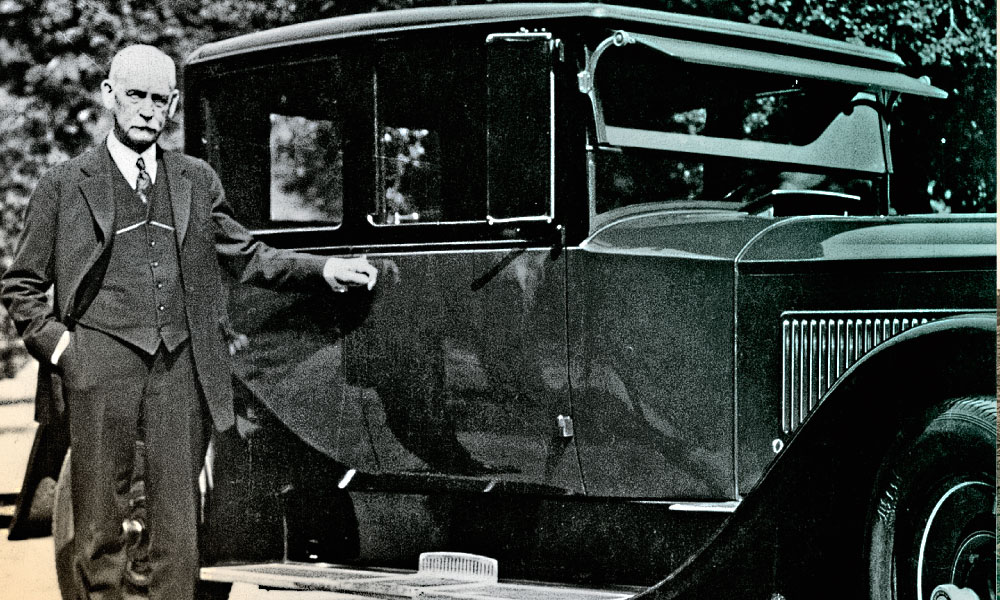
– Courtesy Jeff Morey –
Arrested Development
Wyatt Earp couldn’t get arrested—at least in show biz parlance. In real life, Wyatt had been arrested many times: for prostitution in Illinois, for horse stealing in Kansas, for burglary in Arkansas, for claim jumping in Idaho, for attacking a law officer in Alaska and for bunco steering in Los Angeles.
With a murder warrant still out for his arrest in Arizona, one might think the outlaws in Hollywood would show Wyatt professional courtesy, but they did not. Even worse, they didn’t deem his story worthy of a movie.
That doesn’t mean Wyatt was unknown in Hollywood. A 1911 Los Angeles Times article on his sensationalized gunfighter tales endeared him to many, including actors William S. Hart and Tom Mix, and author Jack London.
Even as Wyatt’s notoriety grew, nobody in the hungry-for-new-stories Hollywood saw the potential for his unique story.
Wyatt’s Untold Hollywood Story
Between 1903 and 1915, Gilbert M. Anderson—“Broncho Billy”—wrote, produced and acted in some 375 Westerns. “I made them like popcorn,” Broncho Billy said. “I’d write ’em in the morning and make ’em in the afternoon. Sometimes I had the scenario on my cuff.” He was making $125,000 a year, making up stories! Well, Wyatt Earp had a great story, but nobody in Tinseltown seemed to want it, or see the potential, not even his actor buddies William S. Hart and Tom Mix. That is the mind blower. Wyatt spent time on the movie sets and must have been intrigued by all the money being made on these fake stories, which may have influenced his storytelling later on.
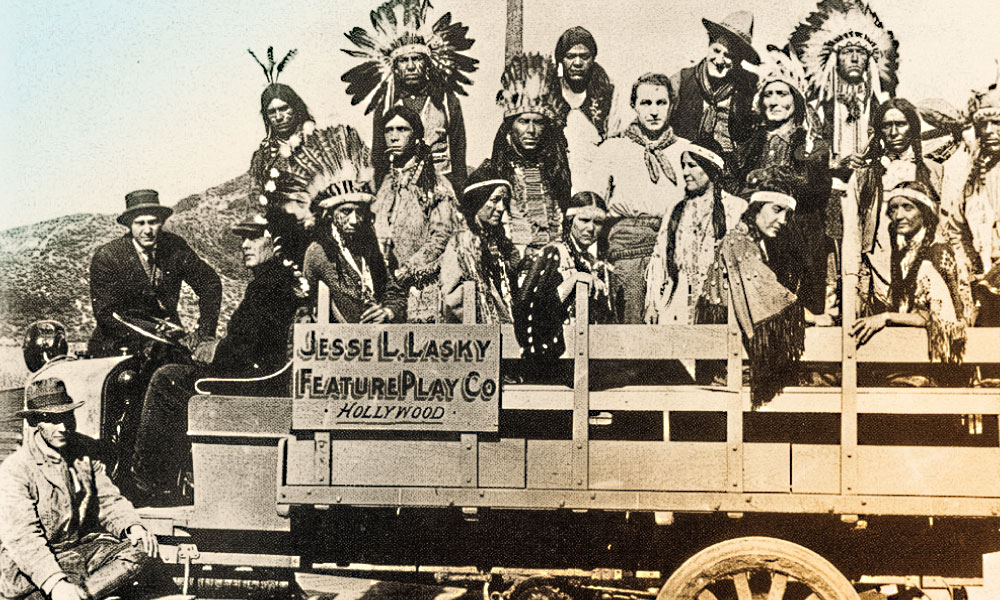
Three Amigos
William S. Hart, Wyatt Earp and Tom Mix were amigos who hung out in Hollywood, eating lunch at Al Levy’s Tavern and the Musso & Frank Grill. At one point, Mix thought they should become cultured, so he purchased a volume of Shakespeare for him and Wyatt to read. Wyatt famously commented, “That feller Hamlet was a talkative man. He wouldn’t have lasted long in Kansas.”
Tombstone vs. Los Angeles
In 1924, legendary actress Lotta Crabtree died, leaving behind an estate of $1.2 million and no known heirs. During a 1926 deposition about one of the alleged heirs, Carlotta Crabtree, who lived in Tombstone, Arizona, Wyatt Earp testified. His answer to one of the questions says much about Los Angeles in the 1920s:
Lawyer: I would like to ask you to state your observation of those times and tell us what the condition of this community [Tombstone] was for law and order?
Wyatt Earp: It was not half as bad as Los Angeles.
Desert Solitaire
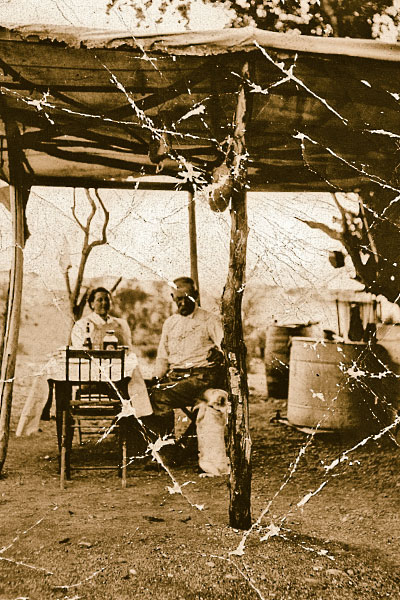
From 1911 until his death in 1929, Wyatt, joined by wife Sadie, spent his summers in Los Angeles and winters at his Happy Days Mine along the Colorado River near Vidal, California. When the couple traveled back to their winter home, they reportedly took the train to San Bernardino, rented or bought a wagon outfitted with supplies and then made the long ride out through Yucca Valley, Joshua Tree, 29 Palms and out across the harsh Mojave Desert to Vidal.
The photo shown above is the only known photo of Sadie and Wyatt together. The dog’s name was Earpie. The old frontiersman enjoyed his winters at his mining camp. When John Flood Jr. interviewed Wyatt in the mid-1920s, he ended the manuscript with Wyatt professing his love for the blue skies of Arizona, just across the Colorado River.
This camp is also where the Earps were visited by Billy Breakenridge—the former Tombstone deputy under John Behan—who milked Wyatt for information to put in his 1928 book Helldorado, then burned the Earp brothers with a damning description of the 1881 O.K. Corral street fight in Tombstone, stating the cowboys had been unarmed and surrendering when they were shot down.
The Real Sky Masterson
William S. Hart idolized Wyatt Earp and Bat Masterson. Hart visited Masterson at his newspaper job in October 1921 and had this picture taken with his hero. Masterson died at this desk typing, on October 25, 1921. He was two weeks shy of his 69th birthday.
Hart dedicated his next movie, 1923’s Wild Bill Hickok to Masterson. Wyatt served as a technical advisor on the film. Sadie saw the movie twice in one day. The film was the first to feature Wyatt on the silver screen, but another decade passed before Hollywood caught on to his enduring appeal.
Author Damon Runyon became so taken with Masterson and his crazy stories about gambling all over the West that Runyon created his high roller character Sky Masterson in his 1933 short story, “The Idyll of Miss Sarah Brown.” That story became the Broadway musical “Guys and Dolls.” In the movie version, Marlon Brando played the title character; he resembles the young Masterson.
Florid Flood
John Flood Jr. meant well, but he was an engineer, not a writer. Somehow, Sadie and Wyatt Earp got it in their heads that Flood could tell Wyatt’s story, and they could all get rich.
Sadie ramrodded the deal. Every Sunday, Flood sat in the kitchen of Earp’s modest, rented bungalow, while Wyatt smoked cigars and sipped whiskey.
Flood barely interviewed the old man. More often than not, Sadie would bust in and blurt out, “You can’t write that! It needs to be clean.”
She also insisted that the manuscript have “pep,” as in “peppy dialogue.” Sadie probably got the idea that using “CRACK!” in all caps would appeal to lovers of Westerns. In the chapter on the Tombstone street fight, the manuscript contains 109 CRACKs and three “ing!” and one “Bang!”
In other words, the outlaw cowboys and legendary lawmen fired about 113 shots during the Gunfight Behind the O.K. Corral in Tombstone, Arizona, on October 26, 1881.
Sadie also got it in her head that Wyatt needed to save a woman, or two, from a fire. In the manuscript, Wyatt braved a Tombstone fire and saved not one, but two damsels in distress (one was an invalid). The chapter was titled “Conflagration.” Sadie later argued the episode was better than all the gunfights put together.
Neither Walter Noble Burns nor Stuart Lake, Wyatt’s later biographers, would use this dubious adventure. Although, in September 1881, Tombstone did have a fire and Wyatt was in town. After the fire, Wyatt was named secretary of the Tombstone fire brigade. Perhaps the tale holds some truth?
The manuscript clocked in at 348 pages. They sent it out to publishers, but it was rejected by everyone as being “florid.” Historians consider it closer to horrid.
Burned By Burns
Walter Noble Burns was a reporter from Chicago, Illinois, with a successful first book, 1924’s The Saga of Billy the Kid. He was looking for another subject when he discovered Wyatt Earp in Los Angeles. He offered to write Wyatt’s biography, but the pioneer lawman declined, citing his allegiance to John Flood Jr., so Burns switched tactics. He asked if Wyatt would tell him about Doc Holliday. Wyatt agreed and gave Burns solid material. Fast-forward to the next year, 1927, and Burns’s new book, Tombstone: An Iliad of the Southwest, comes out; Wyatt is a central character. Wyatt was not amused; he realized ownership of his story was slipping away and that Burns had undermined his ability to corral a payday with a Wyatt biography.
When Wyatt realized the Flood manuscript was not going to cut it, he offered the job to two other writers, who both declined. Then Stuart Lake showed up and offered to tell Wyatt’s story. Assuring Wyatt’s wife Sadie that he would tell a “clean story,” Lake made an agreement to split the profits with the Earps. But after a couple interviews, Wyatt died on January 13, 1929.
During that time, gangster movies were all the rage. Moral watchdogs, the Hays Code people, were alarmed by these films that glorified gangsters. The Hollywood outlaws who ran the studios realized the gangster story wasn’t as offensive if you put it in a Western. Wyatt’s story finally made sense for a movie, because Wyatt straddled the line between the gangster and the lawman. Essentially, he had been both.
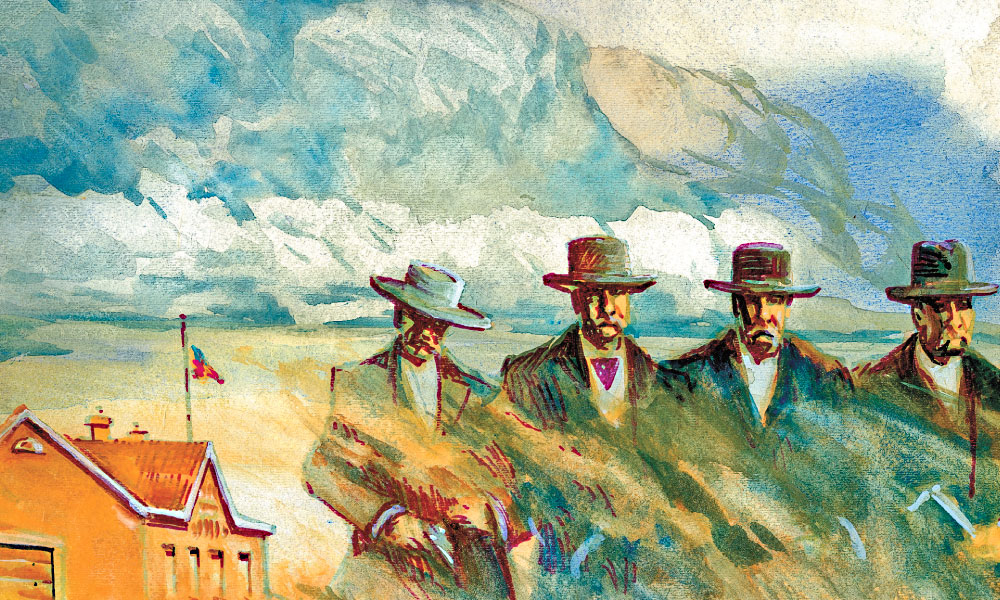
In the 1930s, the image of armed gangs fighting it out over turf merged with the Western, finally absorbing the Earp-Tombstone tale into mainstream storytelling. The 1881 O.K. Corral gunfight reflected the 1929 Saint Valentine’s Day Massacre.
Mr. Monosyllabic
When Stuart Lake finally met Wyatt Earp, he learned the frontier lawman was a tough interview. He tended to have three answers: “Yep,” “Nope” and “Don’t Recall.”
Fortunately, for Lake, Wyatt died after they met a half-dozen times, allowing Lake to put whatever words he wanted in Wyatt’s mouth. Here’s an example that has fueled the myth of the Buntline Special, a 12-inch Colt weapon that Ned Buntline allegedly purchased and gave to peace officers in Dodge City, Kansas, during the summer of 1876:
“There was a lot of talk in Dodge about the specials slowing us on the draw,” Wyatt allegedly recalled. “Bat [Masterson] and Bill Tilghman cut off the barrels to make them standard length, but [Charlie] Bassett, [Neal] Brown and I kept ours as they came. Mine was my favorite over any other gun. I could jerk it as fast as I could my old one and I carried it at my right hip throughout my career as marshal. With it I did most of the six-gun work I had to do. My second gun, which I carried at my left hip, was the standard Colt’s frontier model forty-five-caliber, single-action six-shooter with the seven-and-one-half inch barrel, the gun we called ‘the Peacemaker.’”
Although this statement is highly unlikely (it doesn’t sound like Wyatt), Lake actually believed the Buntline Special existed and tried to find one.
The Gunfight at the O.K. Barn?
After Wyatt Earp’s death in 1929 and the publication of Stuart Lake’s book Wyatt Earp: Frontier Marshal in 1931, moviemakers finally began to nibble at the story (Western movies were in their third decade!) One of the first films to take a crack at the Earp-Tombstone story in the 1930s placed the gunfight at the “O.K. Barn.” The screenwriter or a producer apparently did not believe a corral was dramatic enough for a showdown.
Other tweaks were made along the way, but once the formula was honed in, the floodgates opened and a bunch of people got rich on the story of the “flawless” lawman Wyatt Earp.
Hundreds of books have been published, some 40 movies have been made—so far—and several TV series aired about the legendary frontier lawman (in addition to ABC’s The Life and Legend of Wyatt Earp, audiences saw knockoffs, like ABC’s Tombstone Territory, which was Wyatt’s story in every way except in name, and, of course, Matt Dillon in CBS’s Gunsmoke is obviously based on Wyatt).
His story continued to be told in toys, a thousand magazine articles (many of them in True West) and even subdivisions with his name on them.
Yet the real Wyatt never received a dime for any of it. Doesn’t seem right, does it? On the other hand, Sadie made some major money, but that’s another story.
